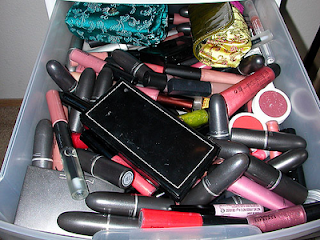Thanks to the stomach flu this past week, Lance, my almost one year old, hasn't been eating. And I've been a complete s.t.r.e.s.s-ball. The no-eating thing just doesn't fly with me. As a mother, I feel like preparing healthy food and filling their bellies is one of my top motherly duties. And when they don't eat, I feel completely out of control.
Chase my almost four year old eats like a bird. Always has. It drives me bonkers. One bite here. Another bite 15 minutes later after he builds an entire farm house with wooden blocks and places all the animals in their appropriate stalls. Then he'll mosey on back for a drink. No bite. And off he goes again. Come breakfast and lunch time, I sound like a broken record - "Chase come finish your food."
Side note - that last visual is soooo not my parenting style. If you were to put me on the spectrum of
hardcore, you will do what I say, I'm in control mom and the
let's work this out together, tell me what you want mom, I am dangling off the edge at the hardcore end.
Anyway -- I've lost sleep over how I get him to eat everything in one sitting. I've tried locking him in the babies' highchair, making fun food shapes, taking toys away, threatening him to no end. I even this week told him that an astronaut came to our house in his spaceship and prepared his breakfast and if he ate it, he'd have super flying power. While he did think that it was pretty cool that the astronaut came down the chimney like Santa (he made that part up), I still got the same result. Pick here. Pick there. I've learned that it's not that he doesn't like what I put in front of him (he wouldn't have a choice anyway), he just eats like a bird.
And after countless, aggravating "Hail, stop trying to force that sandwich down his throat" comments from my husband who sees just a small glimpse into the frustrations of my day, I've learned to just put this battle to bed.
Kind of.
I'd be lying if I said I'm completely at peace with it. I still wrestle inside with a voice that screams, "But it's lunchtime now. Not later. NOW. He's
got to be hungry. He
needs to be hungry." Per my scheduled routine.
But I get it. This phase won't last forever. He'll sit and eat. Eventually. In fact, there will probably be a time where I'm excited that he's done eating. When my cupboards are picked bare. And I can't get food on the table fast enough.
If it's not one thing, it's another right?!?! Umph.
Do you struggle with getting your children to eat? If so here are some helpful answers to questions that have helped me during the "what the hell do I do" phase:
How much should my child eat? How much your child eats may be very different from how much another child eats. Don't worry if it seems that your child doesn't eat enough at one meal. Children often make up for a small meal or a missed meal at the next mealtime. If your child has plenty of energy and is growing, he or she is most likely healthy. Talk to your doctor if you have any concerns about how your child is growing or if you are concerned that picky eating is slowing your child's growth.
What if my child is a picky eater? Many toddlers are picky eaters. Being picky about food is a normal behavior for many toddlers. There may be times when your child wants to eat a particular food again and again for a while, and then not want to eat it at all. Offer your child a variety of nutritious foods and let him or her choose what to eat. You may want to serve something you know your child likes along with another new nutritious food. But try to let your child explore new foods on his or her own. Don’t force your child to taste new foods. You may need to offer a new food several times before your child tries it.
You may need to be flexible with the meals you prepare to make sure your child gets a balanced diet. For example, if you're making beef stew for dinner and your child will only eat potatoes and carrots, you may need to cook some of these vegetables separate from the stew so that your child will eat them. You may want to make a list of foods that you know your child likes so you can make sure he or she eats a balanced diet. The United States Department of Agriculture (USDA) Web site,
ChooseMyPlate.gov, offers good information about nutrition for children and adults.
Setting a good example for your child can also help. If your child sees you eating a variety of healthy foods, he or she will be more likely to give them a try.
How can I make sure my child is getting enough to eat? Offer your child food that is tasty and looks good, and offer the right amount. A good rule of thumb is to offer 1 tablespoon of each kind of food for each year of your child's age. If your child is still hungry, you can serve more. Don't force your child to clean his or her plate. Once he or she is no longer hungry, your child should be allowed to stop eating.
Try not to bribe your child to eat (such as offering dessert as a reward). Threats or punishments aren't good ideas, either. If your child doesn't want to eat, accept his or her refusal. Even though you may be concerned, don't show your child that you are upset by this refusal to eat. If your child is seeking attention, your disapproval fills that need, and he or she may try to gain your attention in the same way another time.
What about snacks? Your child should have 3 meals and 2 snacks a day. Toddlers usually don’t eat enough in one meal to remain full until the next mealtime. Offer your child small, healthy snacks in between meals. Some examples of healthy snacks include low-fat string cheese, yogurt cups, apple slices or strawberry halves, slices of lean turkey or whole-grain crackers with peanut butter.
Try not to offer your child snacks close to mealtimes. If the next meal is several hours away, it’s okay to serve a snack. If the meal is in the next hour, avoid offering your child a snack. If your child comes to the table hungry, he or she is more likely to eat the meal.
If your child doesn't eat at one mealtime, you can offer a nutritious snack a few hours later. If your child doesn't eat the snack, offer food again at the next mealtime. A child will usually eat at the second meal. With this approach, you can be sure that your child won't go hungry for too long or have other problems associated with a poor diet.
How can I make mealtimes easier?
- Give your child a heads up. Ten to 15 minutes before mealtime, tell your child that it will be time to eat soon. Children may be so tired or excited from play activities that they don't feel like eating. Letting your child know that it is almost time for a meal will give him or her a chance to settle down before eating.
- Establish a routine. Children are more comfortable with routines and predictability, so set regular mealtimes, have people use the same seats at the table or create a tradition to have each person talk about something fun or interesting that happened to them during the day.
- Reserve mealtimes for eating and for spending quality time with your family. Don't let your child play with toys during mealtimes. Reading books or watching television shouldn't be allowed during mealtimes either. Explain to your child how good it is to eat together and ask him or her to stay at the table until everyone has eaten.
- Make mealtimes pleasant. If mealtimes are pleasant, there is a good chance that your child will begin to look forward to eating with other family members. Try to avoid arguments during mealtime.
- Manage your expectations. Don't expect manners that are too difficult for your child. For example, don't expect a child who is 3 years old to eat with the proper utensil. For many children, a spoon is much easier to handle than a fork.

Want a little household help? While I don't believe in cooking different meals at dinnertime, breakfast and lunch are exceptions which is why I like the idea of a magnetic meal chart. If you have alittle older children, this is a helpful project thanks to Martha Stewart to get them eating. Experts agree that a child may be more likely to eat if they help choose the menu. Mapping out the meals for the week, also saves time and helps make grocery
shopping easier.
How to: Just download the magnetic chart onto a full-size magnet
sheet. Then print the food name label onto a second magnetic
sheet and cut it out. Together, come up with a variety of sandwiches, fruits,
healthy snacks, and desserts; then print them out and let the child fill in the
blanks.












































